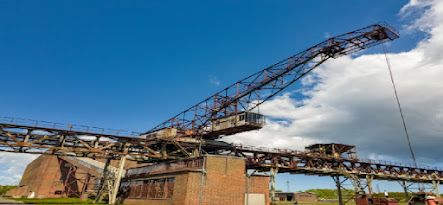Technological Surprise and Resilience in Military Systems
Resilience,
organizational recovery, technological wonder, task effect *Corresponding
writer: alexander.Kott1.Civ@mail.Mil Introduction This paper focuses on
approaches to build resilience and benefit from it when a sudden unfavorable
event arise. The precise hobby is in methods – preferably supported with the
aid of historical proof of achievement – that could help an organization
triumph over a full-size negative impact on its capacity to maintain its task.
To make the discussions more concrete, the paper specializes in a selected
class of destructive activities – technological surprises in battle. A
technological wonder in warfare regularly unfolds as follows. One of the edges
in an armed war (allow’s call that facet Red) introduces a weapon system that
the opposite facet (let’s call it Blue) did no longer assume to see on the
battlefield. The new weapon may also appreciably lessen the potential of Blue
to combat Red. As a result, Blue may additionally revel in huge losses in
personnel, system, territory, and many others. If Blue is sufficiently
resilient, after a time frame it develops countermeasures – regularly a mixture
what is affiliate marketing of latest methods and new technical approaches – that negate the effect of the
brand new weapon and restore the initial ratio of talents between Red and
Blue. Two generally used examples are (1) in the summertime of 1941, the
advent of the Soviet T-34 tank which turned into almost invulnerable to the
German tanks of the time and served as an unwelcome surprise to the Germans; and
(2) additionally in 1941, the use of the German effective 88 mm Flak gun
towards the improvised British tanks in North Africa. (Finkel & Tlamim,
2011) Next to the above description, and for the purpose of this paper, let’s
define resilience because the potential of a navy employer to (a) keep away
from complete destruction in face of technological wonder, after which to (b)
get better and go back to powerful overall performance towards the adversary.
This definition is constant with how resilience is described using the
National Academies of Science (2012) and Executive Orders via each the Obama
(The White House, 2013) and Trump Administrations. For observation of resilience,
technological surprises are mainly convenient cases: the purpose (e.G., a new
weapon), the consequences (the handicap and the losses), and the
resiliency-restoring actions (countermeasures) are normally truly understood,
nicely documented, and regularly even quantifiable. For many countries, the technological marvel is turning into a growing concern as era and science are
spreading ever broader throughout the globe. While generally, this is a fairly
welcome phenomenon, I U.S. Army Research Laboratory, Adelphi, Maryland, USA
Suggested quotation: Kott, A. (2018). Technological marvel and resilience in
navy structures. Trump, B. D., Florin,
M.-V., & Linkov, I. (Eds.). IRGC useful resource manual on resilience (vol.
2): Domains of resilience for complicated interconnected structures. Lausanne,
CH: EPFL Global Risk Governance Center. Available on irgc.Epfl.Ch and irgc.Org.
2 the propagation of understanding about building state-of-the-art guns
maintains to growth the range of states and non-country actors that could
spring a technological surprise at given united states.
By their very nature, technological surprises
are rarely amenable to danger-management methods. Risk-based strategies require the identification of risk, vulnerability, and results. The area of cutting-edge
technologies is so wide and numerous that Red has almost unlimited
possibilities to choose a selected study and development course and to build
a singular powerful weapon machine. If Blue’s intelligence service fails to
detect the improvement (a common prevalence), Blue has no way to know the
character of the brand new Red weapon, and can't pursue any meaningful
danger-mitigation techniques that would help in opposition to the destiny
stumble upon with the but-unknown weapon. In theory, Blue may try to undertake
a very extensive portfolio of R&D applications to investigate the
capabilities and the countermeasures in opposition to all likely future Red
guns. In exercise, such an exhaustive exploration and mitigation is
unaffordable even for the wealthiest international locations. Therefore,
resilience-based total approaches are probably to be much less steeply-priced
than risk-primarily based strategies. Instead of (or perhaps similarly to)
making an investment in a totally broad (and really costly) variety of mitigation
mechanisms against an infinitely huge spectrum of feasible technological
surprises, us of a might also opt to put money into talents and belongings
that might enable resilient responses to an inevitable technological marvel.
Although such investments are sizeable, they're maximum possibly to be
substantially smaller than doubtlessly limitless spending on keeping off all
feasible dangers.




Comments
Post a Comment